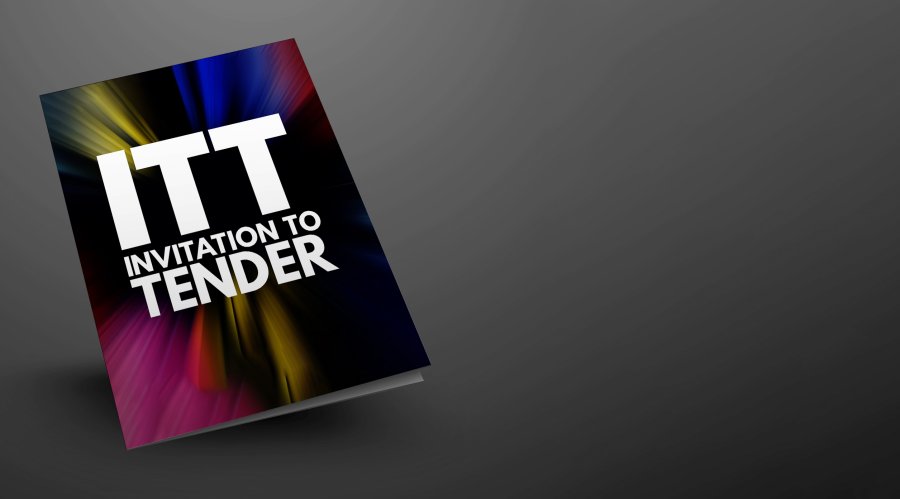If you’ve read our Tender Process Jargon Buster blog, you’ll know that an Invitation to Tender, or ITT, is:
“effectively the main step in the process where suppliers are invited to provide offers to supply services or products and win a contract with the buying organisation. This requires the supplier to respond to detailed questions about the service or product and usually submit prices by a specified deadline.”
Let’s explain that in a bit more detail.
In the public sector, any organisation wishing to procure services or supplies must follow a set of rules to ensure that all bidders are treated equally and contracts are awarded transparently, in the best interests of the public. This means that, as part of the tendering process, for services or supplies above a certain value, the public sector organisation must issue an Invitation to Tender. Sometimes this is preceded by a Selection Questionnaire SQ (formerly Pre-Qualifying Questionnaire PQQ), which is used to shortlist the number of suppliers responding to the ITT by scoring them against a preliminary set of requirements. In these cases, instead of issuing the ITT to everyone, it is only issued to those who ‘pass’ the SQ stage.
There is a requirement for every public sector contract, above a certain value, to be freely-available as part of the tender process. Invitation to Tender notices can be found on government websites such as Find a Tender and Contracts Finder, or via tender alerts websites such as Complete Tender’s Open Tenders Directory.
The Invitation to Tender itself consists of a suite of documents which will describe the tender opportunity, specify the services or supplies to be delivered, how to respond, how tenders will be evaluated, and the deadlines associated with the tender process. Many of these documents are often labelled as ‘annexes’ or ‘schedules’ and can be numerous and vary depending on the sector, buyer, size, value etc.
However, there are some documents that are usually present. They may be standalone documents, or they may be part of one or more larger documents:
The main ITT document
This document contains a summary of the process being followed for the tender. It should inform all tenderers of all the practicalities involved such as:
- Details of the contracting authority
- Contract length
- How to submit the tender
- What format the tender should be in/what is required – buyers often include a ‘checklist’ so tenderers know what they need to submit
- Whether the tender is separated into different Lots for different services/supplies
- How to submit the tender – this is often via a portal, but can be by email and occasionally a physical copy is required
- Who to contact, and how to contact them with any queries
- How to book a site visit if relevant (or details of any ‘virtual’ site visits available)
- The timescales associated with the tender – not just the submission deadline but when evaluation will take place, the contract start date, the deadline to raise clarification questions, contract award date etc
- How tenders will be evaluated, including the weighting between Quality and Price.
The specification
As you would expect, this document describes what the buyer wants. Specifications vary in size from a single page to 100 pages or more. The specification may also be broken down into a number of sub-documents (maybe depending on whether there are different Lots), but ultimately the specification should provide tenderers with the information they need to fully understand the service or goods the buyer would like to procure.
TUPE data
For those tenders where TUPE (Transfer of Undertakings - Protection of Employment regulations) applies, the buyer must provide relevant TUPE data. Sometimes tenderers will be asked to sign an NDA or confidentiality agreement before the buyer will release the data; often it is included as standard in the tender documentation. Often, the TUPE data must first be gathered by the incumbent contract holder, for the buyer to release, which can prove difficult.
The terms and conditions
Often included in the ITT documentation will be the terms and conditions of the contract. For tenders for frameworks, this would be a framework agreement. On some occasions the buyer may ask tenderers to submit their own standard terms and conditions.
The quality questions
The quality questions (also known as method statements) may be included in the ITT document, the specification, or in a standalone ‘response document.’ They may even be available online only, but they will form part of the ITT. The marking scheme should be clearly laid out, along with any word, character or page limits to the questions. The buyer may want tenderers to respond to them using a specific template, in a free format or in online boxes.
The pricing schedule/pricing form
Tenderers are usually required to submit their pricing at the ITT stage of a tender. The format of this is usually specified in the form of a template - MS Excel is commonly used, as is MS Word. Pricing schedules vary from straightforward to extremely complex. Allow yourself plenty of time to understand what is required and ask any questions if any part is unclear.
Referee/reference request
Buyers ask for details of previous contracts that can be used as references. If the tender had an earlier SQ stage, it’s likely references were asked for during that stage. For those that go straight to ITT however, references will need to be provided, usually 3.
Additional return documents
There is often an additional document or set of documents or appendices the buyer requires to be returned along with the responses to the quality questions and the pricing and these may require the signature of the tenderer. Typically, these can include:
- Form of Tender
- Freedom of Information
- Certificate of non-collusion
- Conflict of interest
Examples of other ITT documents
Of course, there may be other documents released by the buyer at ITT stage, such as their policies and procedures (Equality and Diversity and Health & Safety are commonly provided), details of KPIs, staff working patterns, GDPR etc. Each document included should provide the buyer with information to help them respond to the tender.
Other Invitation to Tender processes
Everything detailed above is in a written format and this can be all that needs to take place in the Invitation to Tender process. However, in some cases, site visits may be available to allow tenderers to obtain a better understanding of the buyer’s requirements or see the location of the contract. These are often on fixed dates so it is important to book as soon as you can. Some buyers have run ‘virtual’ visits during the COVID-19 pandemic using video conferencing software to allow tenderers to ask questions they would typically ask at a site visit. Many tenders now include more detailed site plans, or photographs in lieu of a site visit.
For help analysing an ITT to determine if it’s right for your business, take a look at our To bid or not to bid - how to analyse whether a tender is right for you blog for further information, or get in with our tendering team.




